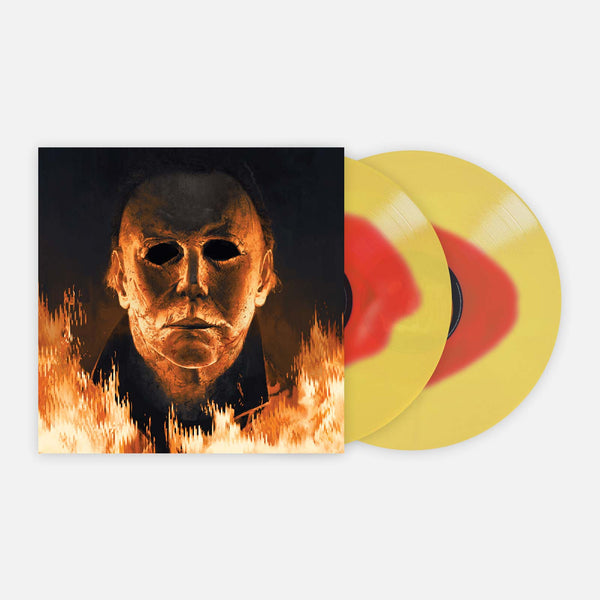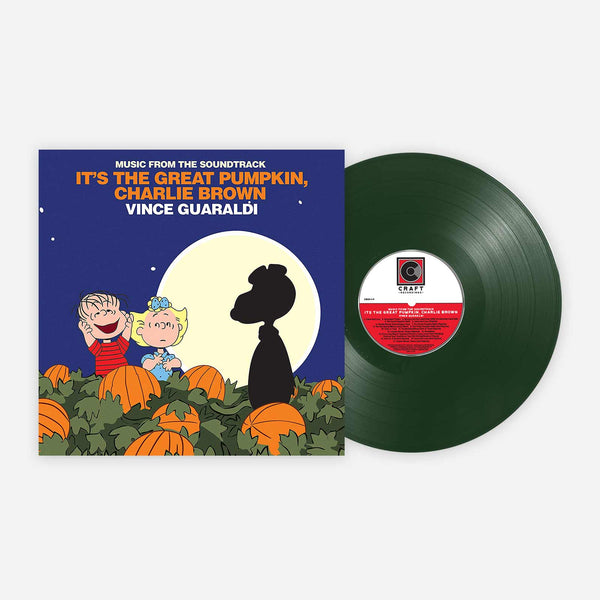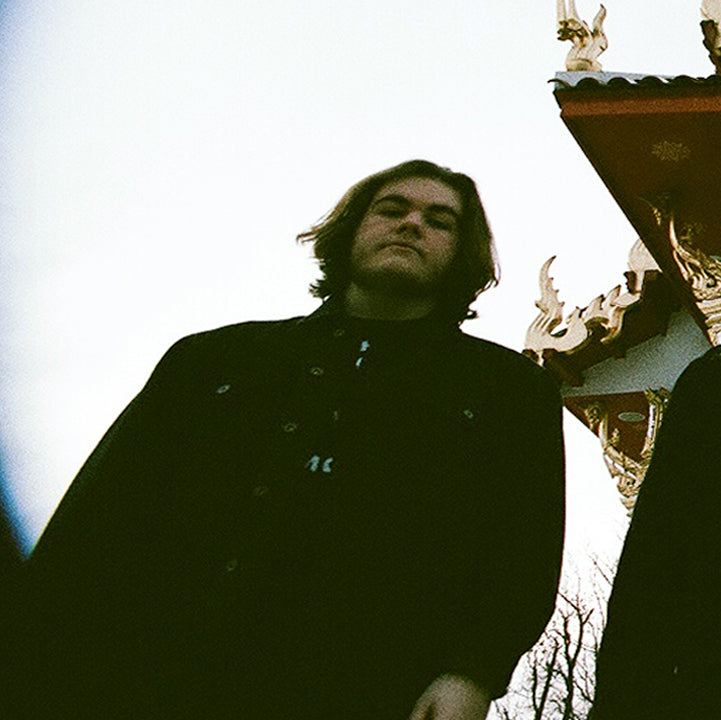Aos 20 anos, Donald Byrd já havia rompido a cena bebop de Nova York com seu estilo de trompete feroz e expressivo. Enquanto estava na faculdade, Byrd se juntou a Art Blakey e os Jazz Messengers, e a partir desse ponto, começou a deixar sua marca no mundo do jazz. No meio da década de 50, Byrd teve a oportunidade de tocar com muitos dos principais músicos da época, como Thelonious Monk e John Coltrane, antes de iniciar sua própria carreira. Não muito depois, ele seria responsável por ajudar a lançar as carreiras de artistas como Herbie Hancock, que considera Byrd um mentor e uma influência precoce.
Byrd was something of a natural-born leader as well, encouraging young fellow musicians to bargain with their contracts, keep their publishing rights to themselves, and fight for creative freedom. These lessons that Byrd passed down helped pave the way for musicians to fairly own their creative ideas in a time when artists were often unfairly treated. Over the course of his expansive career, Byrd led his own groups on over 50 albums and was a sideman on nearly 100 others. Byrd eventually obtained a PhD in music education and taught at several different universities, where he continued to mentor and educate young people in the music that embodied him.
Even if Donald Byrd is an unfamiliar name, you have most likely heard his music in one way or another. For one, he has been sampled by just about everyone in the hip-hop stratosphere, including but not limited to: A Tribe Called Quest, Nas, Public Enemy, 2Pac, De La Soul, NWA, the Pharcyde and so on. A quick glance at his inclusion in hip-hop from its conception up to this very day proves beyond any doubt that without his art, his voice and his mind, it would be a vastly different world for listeners and creators of music alike.
Whether you’re a jazz aficionado or purely a passerby with casual interest, it’s agreed upon that Donald Byrd’s footprint on jazz history and beyond is held with collective appreciation. It’s safe to say that this consensus will remain for the foreseeable future, as his legacy of music and education will always be celebrated. Byrd is no longer with us, but the art he left behind will continue to change lives forever.
Byrd in Hand
Byrd in Hand — recorded in 1959 — is an all-around solid jazz record with eagerness projecting from the young group leader. Here, Byrd’s fast developing trumpet style is displayed head-on. He shows lots of promise and early insight to his success as a trumpeter and leader. The group on this record involved some the great jazz session players of the time including Charlie Rouse, Walter Davis Jr., Sam Jones, Pepper Adams and Art Taylor. While the recordings on Byrd in Hand garnered minimal acknowledgement at the time they were made, the execution of these compositions is absolutely superb. In particular, Byrd’s original compositions are evocative and eloquent with every player providing their own distinct tone. With Byrd, this sextet goes into these sessions with a fluid hard bop-oriented style and supply with undeviating creativity.
Free Form
Out of all Byrd’s early works, Free Form remains as one of the best. This record stays consistent while exploring several different sides of jazz, all of which Byrd and co. deliver with fluent expression. On “Free Form,” we hear Byrd playing alongside an impressive line-up including the great Wayne Shorter (a fellow Jazz Messenger) and a very young Herbie Hancock, who would become Byrd’s protégé. With a group containing as much talent as this, you’ll want to deeply listen as the band runs through each line of musical dialogue. Byrd leads this group through a winding road of diverse jazz stylings while simultaneously discovering his own signature brand of trumpet playing in the process. The title track off this LP is an 11-minute vigorous improv that perfectly demonstrates each musician’s skill as individuals and as a group. Byrd, Hancock and Shorter trade off phenomenal solos while Billy Higgins’ intricate and exhilarating drumming propels the track in which Butch Warren’s bass is maining the rhythm. This kind of voracious group dynamic can be found anywhere on this record. Free Form is the point in Byrd’s career where he sets himself apart as a no-frills, clean-toned trumpeter and destined leader of the New York jazz scene.
A New Perspective
An innovative component of Byrd’s pre-fusion era, A New Perspective encapsulates a modern gospel hymnal as envisioned by Byrd. According to his liner notes, Byrd expressed a long desire to write something entirely consisting of spiritual pieces. On this record, he accomplishes this wish. This project gives a modern jazz twist to the religious music that could be heard in an earlier period of time in places like New Orleans. He notes that this is done with complete respect toward the traditional ways of playing that particular music. Byrd brings in composer Coleridge-Taylor Perkinson to direct an 8 person choir which provides the strong gospel characteristic. Hank Mobley, one of the great saxophonists of the bop era, joins in on this album with his subtle but effective style. This style is a very crucial element since anything more aggressive would negatively affect the album’s tone. This group tells a story through togetherness and emotion by their playing, which fulfills Byrd’s original intentions for the project. Among many things, A New Perspective is a work of spiritual connection, thus making it a truly memorable moment in ’60s jazz.
Electric Byrd
Electric Byrd is the album that finds Byrd transitioning into his early jazz-fusion form. It’s a prominent piece of Byrd’s discography for its interesting use of improvisation, funky direction and overall jazz musicianship. You can catch glimpses of Miles Davis’ brand of fusion, most certainly off of Bitches Brew, which was released only months before this record. Despite this slight similarity, Byrd and his frequent collaborators including Ron Carter, Pepper Adams, Lew Tabackin and Airto Moreira truly make a jazz-fusion album that can stand on its own and has for almost 50 years. Moreira’s style of drumming makes a very strong impression on this record. As he is a Brazilian born drummer, the percussive influences of Brazil can be heard all throughout his playing, most notably on his contributed composition “Xibaba.” Each of the four compositions on Electric Byrd are extremely imaginative. Utilizing different effects and instruments, this group creates a spacey and often elusive psychedelic atmosphere that balances all the free-form improvisation. This is instantly exemplified by the album opener “Estavanico.” Every song acts as an open-ended piece where the general direction is always changing but never results in disorganization. Electric Byrd is an absolutely essential jazz-fusion record and a true focal point in Byrd’s career.
Black Byrd
Black Byrd (a title that would later inspire the name of Byrds’ side group the Blackbyrds) is one of the funkiest records in his discography. Expressive flutes, trumpets and danceable rhythms are laced throughout each cut, creating a piece of work that is beyond words. It’s no wonder why Black Byrd is one of Blue Note Records’ best selling albums. While this was a success for Byrd, many jazz enthusiasts considered him a sell out for leaving behind the hard-bop genre he was a part of and venturing into the sounds of funk and soul. Despite what any elitist had to say, Byrd was revolutionizing the fusion genre. Rather than a smorgasbord of chaotic jazz-funk that you’d hear during this same era, Black Byrd was focused on being melodic and straightforward. Byrd’s laid-back jazz overtones mixed with the sounds of his funk contemporaries created a recipe that is simply irresistible to the ears. While Byrd hangs back during some tracks, the Bobbi Humphrey-like flute solos make a huge impact that defines the sound of this record. This is also the first of many albums to be produced by the Mizell brothers, a partnership that’d help further shape the sound of Byrd’s classic streak of Blue Note releases. This album perfectly achieves a sound that never comes off as lacking anything. From front to back, this record overflows like a waterfall of powerful instrumentation coming from all corners of the soundstage. Wah-wah guitar, funky bass, breezy flutes, hyperactive keys, tight percussion and Byrd’s talkative trumpet make up the DNA of this record that perfectly fits into the timeline in which it was released. Within this album you even hear vocals and synthesizers thrown in the mix. While this is nothing out of the ordinary for a funk album, these two things were practically sacrilege to the jazz purists of the time. Their judgment did not deter Byrd, though, as he found his voice and was ready to evolve as a musician.
Street Lady
1973 was quite a year for Donald Byrd. Following the quick and somewhat controversial success of Black Byrd, the follow-up Street Lady was released shortly thereafter. Despite this short interval of time between both recordings, these albums each share a different side of the jazz, funk and soul story. Street Lady presents a stronger focus on soul and R&B, with funk elements nestled between. The sounds made famous by artists like Curtis Mayfield is the crux of Street Lady. 1970’s urban and city scenery is where this loose concept album about a lady of the night takes place and the music is completely representative of that. The album plays much like a ’70s original soundtrack would. Each song is a jazzy soul discotheque carried by a heavy back-beat and bubbly rhythms while solos fly around the mix. Since this album was released so closely to its best-selling predecessor, some listeners tend to disregard it. Some goes as far as thinking it’s an attempt at riding the coattails of Isaac Hayes and Mayfield’s blaxploitation soundtracks. But Street Lady is the underrated companion album that’s brimming with accentuating soul grooves, indescribable musicianship and some of Larry Mizell’s finest production to date.
Stepping Into Tomorrow
Released shortly after Places and Spaces, this album shares a similar emphasis on the jazzier side of things while being marinated in rich soul tones. This album welcomes you with the title track, a spiritual soul excursion with a Sun Ra-style mantra repeated by the singers. As this rhythm-heavy track progresses, more and more instruments and distant sounds became intertwined, creating an unbelievable ascension that maintains its stability the entire way through. Not to mention one of the catchiest hooks in Byrd’s discography can be found on this track. The sultry guitars and vocals on this album play a major role when in conjunction with the lavish orchestration and Byrd’s expert-level trumpet performances. Stepping Into Tomorrow is a record that was certainly ahead of its time. There are many moments that sound like it could have been released within the last decade or two. The impassioned “Think Twice” has a certain melody and swing that is reminiscent of the neo soul movement during the late ’90s and early 2000s. This track and many others off this album have been sampled numerous times by some of the great hip-hop acts of the ’90s including Main Source and A Tribe Called Quest. This engraved Byrd’s name into the quintessential sound of jazz-rap. At the tail end of the record, “You Are The World” picks up the pace with its wobbly synthesized effects and restless drum patterns, producing an otherworldly sound. This album sometimes gets overlooked in regards to the genre of soul-jazz, but nonetheless, its passionate and smooth solar jazz disposition is worthy of recognition and appreciation.
Places and Spaces
In just 35 minutes, this album delivers more than some artists are capable of in their entire career. Throughout Places and Spaces you will find that Byrd’s masterful trumpet and flugelhorn playing is never self-indulgent and always enthralling. For example, in “You and The Music,” he demonstrates this ability as he keeps the song moving in an orderly fashion while playing without any restrictions. Byrd adds so much liveliness to each track as well, further providing evidence as to why he is regarded as one of the best to ever do it. Alongside him, an array of string arrangements and honeyed vocals seamlessly glide across each tune with ease. It must also be emphasized that the drumming on this entire record is massive, every strike of the drum kit packs a punch. This incredibly keen drumming and bouncing rubbery bass grants each track a rhythm that’s unique compared to many records in the same genre. Opposed to a great deal of albums in the jazz-funk and soul territory, rather than showing off individual skill this album indulges on delivering emotion. It’s certainly a feeling of happiness, however, there is also a sense of freedom of the mind, body and soul. The title track is a soul-funk odyssey packed to the brim with lush instrumentation that completely submerges the listener in perpetual delight. Uplifting melodies and arrangements are etched into every second of this track as ethereal voices and strings swirl around before breaking into a hard funk groove, and ultimately returning to the soulful stride implemented at the start. The beauty of this Blue Note landmark is that after listening, everyone comes out of it with a different message.
Caricatures
By the time this record was released, Byrd had already made a name for himself as one of the leading trumpeters in not only jazz, but in the fusion genre as well. This album says outright that Byrd was far from hitting a creative peak and could keep up with the always-changing music world. The entirety of this record contains a constant energetic pace that’s sewn into each disco-infused groove. Caricatures — his last album with Blue Note — showcases some of Byrd's best performances off of any album in his catalog. It isn’t just what he is playing that’s great though, it’s the way he orchestrates the rest of the group as he plays effortlessly. Never interrupting or colliding with the rest of the band, Byrd finds a balance without limiting his expression.
Even though this was released toward the latter end of Byrd’s music career, he was still creating atmospheres that blended jazz proficiency and pure funk and soul dexterity for keeping listeners on the edge of their seats. For instance, “Science Funktion” — one of the many highlights found on this dance frenzy record — is a futuristic funk showdown between synthesizer and trumpet while the rest of the group lays down a sharp motorized rhythm underneath. The tenacity of this rhythm section plays a very important role across album as these songs could easily fall apart if there wasn’t something binding everything together. With this group of top notch jazz and soul players of the time, including the soon-to-be ’80s star Patrice Rushen, this album is bestowed upon a utopia of immense feelings. Infectious toe-tapping rhythms are planted sharp and deep, illuminating brightly to a point where you never want these songs to end. As you would be with hearing any Byrd project, you’re left completely enamored by how fantastic every moment is. There isn’t one ounce of filler to be found, each measure is as important and appealing as the last. Caricatures isn’t just a stand out moment in Byrd’s discography, it’s a pivotal piece of the genre it's representing.
Kofi
Although recorded between 1969 and 1970, it wasn’t until 1995 that Blue Note released what undeniably stands out in Byrd’s vast catalog. These previously unreleased tracks were taken from the last sessions before his explorations in funk/soul fusion during the ’70s. Here you gain some awareness of his style before this genre transition. The general tone of this album is relaxed and Byrd’s playing is quite powerful and often moving. His lyrical style of trumpet playing is on full display here, as is the rest of the band’s enthusiasm. The interaction among these performers is comparable to what you’d encounter with many classic jazz groups of the ’60s. On this record, you have jazz veterans such as Ron Carter on bass and Airto Moreira on drums, who elegantly complement every composition. Byrd’s presentation of ideas and chemistry with each player during these sessions make this an album one that every jazz fan and musician should hear.
Matt Haslett é músico, colecionador de discos e escritor freelancer baseado na Filadélfia. Ele está atualmente obcecado por Stereolab, CAN e Ariel Pink.
Related Articles
Junte-se ao Clube!
Junte-se agora, a partir de 44 $Desconto exclusivo de 15% para professores, estudantes, militares, profissionais de saúde & primeiros socorristas - Verifique-se!







